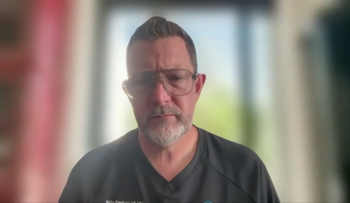
SonoClear System Earns Breakthrough Designation for Intracranial Procedures
The system showed enhanced diagnostic accuracy of intraoperative imaging, potentially improving the extent of resection while reducing residual disease.
The SonoClear® System, an ultrasound acoustic coupling fluid and sterile transfer kit, has been granted breakthrough device designation by the FDA for intracranial ultrasound procedures, according to a news release from the drug’s developer, SonoClear AS.1
According to the developers, the system was developed to help differentiate between low-grade brain tumors and healthy tissue, which has shown difficulty when looking under a microscope.2 Ultrasound can be used to locate and determine the size of tumor tissue; however, no air, or “noise,” must be present between the probe and the tissue.
Using substances found in common medicines, the developers engineered the SonoClear system to maintain high image quality throughout an intracranial operation, making it easier to differentiate between tumor and healthy tissue while removing cancerous tissue without harming healthy tissue.
Previously, 2 cycles of animal testing followed by a first-in-human trial, which assessed 3 different concentrations of the solution, showed that the system produced virtually noise-free images and that no adverse effects could be linked to its use. A phase 2 study (NCT07042620) will further evaluate its safety and effectiveness.
"Removing aggressive neurological tumors, such as gliomas, presents a significant surgical challenge," Geirmund Unsgaard, MD, neurosurgeon at St. Olavs University Hospital in Norway and SonoClear founder, said in the news release on the FDA decision.1 "In brain tumor surgery, neurosurgeons rely on intraoperative ultrasound to guide their work and confirm complete tumor removal. Standard irrigation fluids create visual artifacts that can obscure the surgical site precisely when clarity is most critical: at the end of the procedure when surgeons need to verify whether any tumor remains. We created a simple solution that works with all intraoperative ultrasound systems and allows neurosurgeons to clearly see the tumor, enabling improved decision-making in surgery."
Investigators of the prospective, multicenter phase 2 study will enroll patients to a single arm assessing the effectiveness of ultrasound imaging in brain tumor surgery using the SonoClear System, which is intended to mimic brain tissue.3 Ultrasound images will be obtained at different time points during the operation.
First, imaging will occur following craniotomy. Then, after at least 80% of the tumor is removed, imaging will be conducted, and finally, at the time when the surgeon deems the resection completed. Ultrasound acquisition will be performed twice at the second and third timepoint after partial and complete resection.
The end points of the trial will include contrast-to noise ratio to show images are less influenced by image artefacts vs those obtained using a routinely used saline solution, surgeons image rating on a scale of 1 to 10 to score the quality of images according to 3 questions at each time point during the operation, and adverse effects for up to 6 months following the procedure.
Patients 18 years or older will be eligible for trial enrollment if they have a malignant or low-grade glial tumor suspected from diagnostic MRI scan, a pre- or peri-procedural confirmed histopathology of glioma, a Karnofsky performance status of 70 or higher, and a life expectancy of more than 30 days.
"Toward the end of a resection, with SonoClear fluid in the cavity, I could clearly see whether there was any tumor remnant, which is not always the case when we use standard irrigation fluids as a couplant,” principal investigator of SonoClear System trials Francesco DiMeco, MD, neurosurgical specialist at the Neurological Institute Carlo Besta in Italy, said in the news release.1 “This gives me confidence that I can achieve a maximum safe resection using intraoperative ultrasound combined with the SonoClear System."
References
- SonoClear AS receives FDA breakthrough designation for SonoClear® system. News release. SonoClear AS. July 1, 2025. Accessed July 2, 2025. https://tinyurl.com/2vm529me
- Norwegian superfluid is now helping brain surgeons. News release. SonoClear AS. Accessed July 2, 2025. https://tinyurl.com/4vmrzhac
- A study to test a new fluid to improve the quality of images obtained by using sound waves (ultrasound) during surgery. ClinicalTrials.gov. Updated June 29, 2025. Accessed July 2, 2025. https://tinyurl.com/mu28dm65
Newsletter
Stay up to date on recent advances in the multidisciplinary approach to cancer.































































































